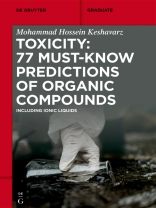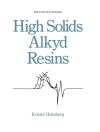Due to the advances of various methods for the prediction of toxicity of organic compounds and ionic liquids (ILs), it is necessary to review these methods for scientists and students. It is essential to compare the advantages and shortcomings of these methods. Since many organic compounds and ILs are synthesized each year, this book introduces suitable models for the assessment of their toxicities.
This book reviews the best predictive methods for the prediction of toxicity of organic compounds and ILs, which were derived by in vitro or in vivo experiments. Different available quantitative structure‐toxicity relationship (QSTR) models based on various descriptors have been discussed to predict toxicity parameters such as LD50 (50% lethal dose), EC50 (the concentration of the desired IL that produces mortality of 50 percent of the bacterial population) and log(IGC50-1) (logarithm of 50% growth inhibitory concentration of T. pyriformis) of various classes of organic compounds and ILs. The reliability of these methods is compared and discussed. Each chapter contains some complimentary problems with their answers, which can improve the experience of students and researchers.
The introduced subjects are suitable for advanced students in chemistry, biochemistry, medicinal chemistry, and chemical engineering.
A propos de l’auteur
Mohammad Hossein Keshavarz, born in 1966, received his MSc and Ph.D. at Shiraz University in 1991 and 1995, respectively. From 1997 until 2008, he was an Assistant Professor, Associate Professor, and Professor of Physical Chemistry at the University of Malek Ashtar in Shahin-shahr of Iran. Since 1997 he is a Lecturer and researcher at the Malek Ashtar University of Technology, Iran. Keshavarz has published over 400 scientific papers in international peer-reviewed journals, eight books in the field of the assessment of energetic materials (four books in Persian and four books in English where three of them have the second Edition), and five book chapters (in the English language).












